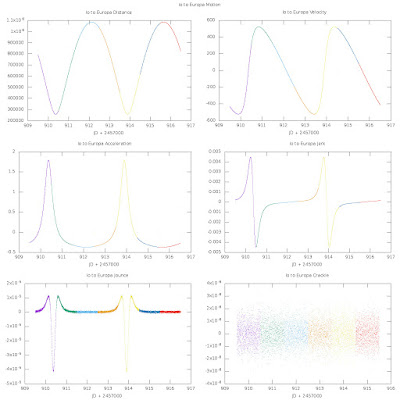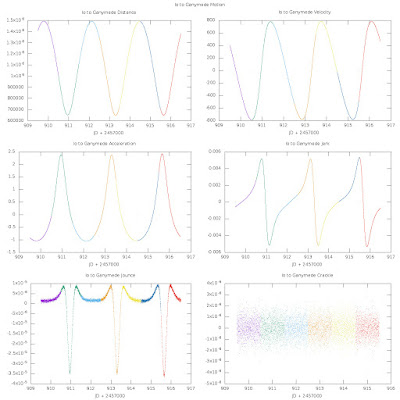Looking at the motions of the four Galilean moons of Jupiter. The following plots are for 08 June 2017.
In all of these plots, I'm showing the 0th (position), 1st (velocity), 2nd (acceleration), 3rd, 4th, and 5th derivatives of position as a function of time. So the 0th derivative is in km, 1st is km/minute, 2nd is km/min^2, 3rd is km/min^3, 4th is km/min^4, and 5th is km/min^5. What do the higher-order derivatives feel like? Not sure, but the 3rd order probably feels like a bump (a change in acceleration).
Io motion around Jupiter:
Europa motion around Jupiter:
Ganymede motion around Jupiter:
Callisto motion around Jupiter:
Io motion relative to Europa:
Io motion relative to Ganymede:
Here's how the 4th derivative sounds:
Io motion relative to Callisto:
Europa motion relative to Ganymede:
Europa motion relative to Callisto:
Ganymede motion relative to Callisto:
All of this will be converted to audio so I can experience how it sounds.





















